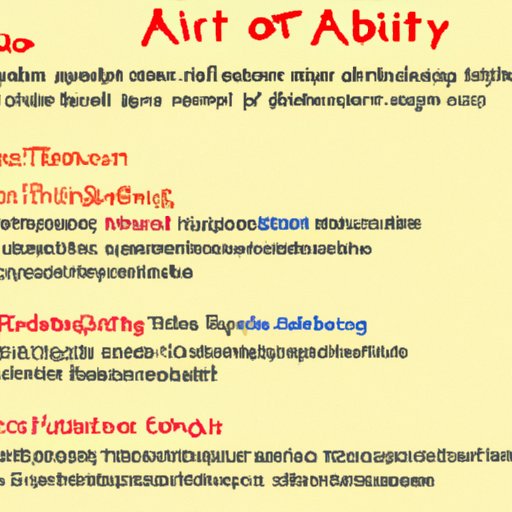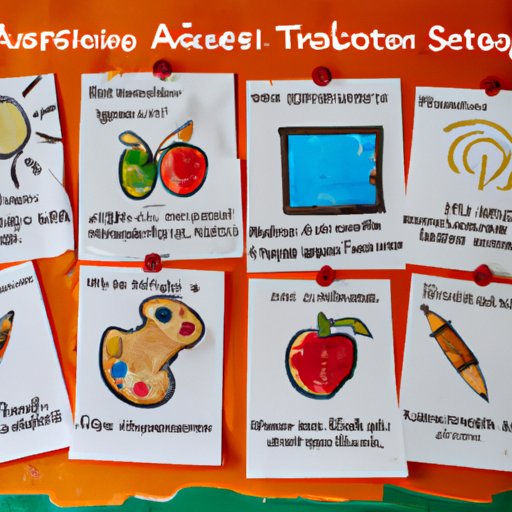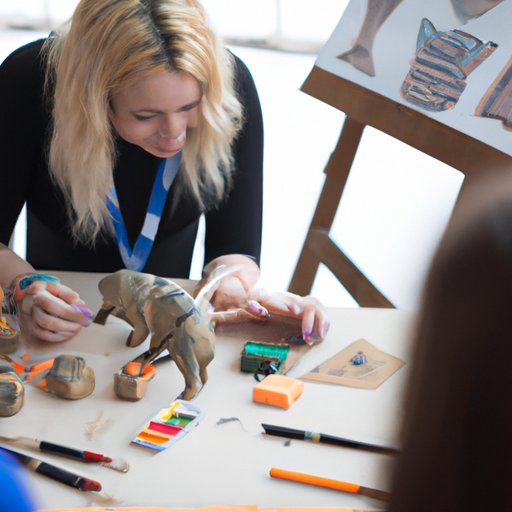Introduction
Art teachers provide instruction in a variety of media and techniques, from traditional drawing and painting to digital imaging and multimedia. They also help students develop their creative thinking skills, foster appreciation for the visual arts, and learn how to express themselves through art. If you’re interested in becoming an art teacher, there are several steps you must take to achieve your goal.
What is an Art Teacher?
An art teacher is responsible for teaching students of all ages how to create, appreciate, and understand works of art. Art teachers typically have a background in fine or studio art and may specialize in a particular medium or technique. They may also teach courses in art history and visual culture. Depending on the school, art teachers may serve as mentors and advisors, providing support and guidance to students both inside and outside the classroom.

Overview of the Requirements for Becoming an Art Teacher
To become an art teacher, you must first complete a bachelor’s degree in art or a related field. After graduating, you will need to obtain the necessary certification to teach in your state. You may also consider completing specialty certifications in particular areas of art education such as digital media or ceramics. Additionally, you should familiarize yourself with the different types of art education, understand the developmental stages of children, and develop strategies for assessing student performance in art classes.

Develop a Plan to Earn Your Teaching Credentials
The first step to becoming an art teacher is to earn your teaching credentials. To do this, you will need to complete a bachelor’s degree in art or a related field, such as art history or visual culture. Depending on the program, you may also be required to complete coursework in education, psychology, or another related field. Once you have earned your degree, you can begin the process of obtaining certification to teach in your state.
Obtain a Bachelor’s Degree
A bachelor’s degree in art or a related field is the first step to becoming an art teacher. In addition to taking courses in art history, studio art, and visual culture, you may also be required to complete coursework in education, psychology, or another related field. This will help you gain the knowledge and skills necessary to effectively teach art.
Complete Certification Requirements
Once you have earned your bachelor’s degree, you must complete the certification requirements in your state. These requirements vary by state but typically involve passing a series of tests and completing a certain number of hours of student teaching. You may also be required to participate in professional development activities and complete additional coursework.
Consider Specialty Certifications
In addition to the standard certification requirements, you may also want to consider obtaining specialty certifications. These certifications demonstrate to potential employers that you have a thorough understanding of particular areas of art education, such as digital media or ceramics. Specialty certifications can also help you stand out from other applicants when applying for jobs.

Understand Different Types of Art Education
In order to become an effective art teacher, it is important to understand the different types of art education. Traditional art education focuses on teaching students the fundamentals of drawing, painting, and sculpting. Contemporary art education involves exploring modern concepts, such as digital media and installation art. Understanding the differences between these two approaches can help you determine which type of art education is best for your students.
Get to Know the Field of Art Education
In order to stay up to date on the latest trends and techniques in art education, it is important to get to know the field. Research current art resources, attend professional development events, and network with other art educators. Doing so will help you stay informed about the latest developments in the field and ensure that your teaching methods remain relevant.
Learn How to Adapt Art Lessons to Different Age Groups
It is important to understand the developmental stages of children when planning art lessons. Each age group has different needs and abilities, so it is important to choose materials and techniques that are appropriate for each age group. For example, younger children may benefit from using simpler materials, while older children may be able to handle more complex tasks.

Develop Strategies for Assessing Student Performance in Art Classes
In order to evaluate student performance in art classes, it is important to establish criteria for assessment and utilize multiple forms of assessment. This could include written reflections, portfolios, and presentations. Developing strategies for assessing student performance will help you provide feedback to students on their progress and provide them with meaningful learning experiences.
Become Familiar with the Latest Trends and Techniques in Art Education
In order to stay up to date on the latest trends and techniques in art education, it is important to participate in online discussions, attend conferences and workshops, and read books and articles about art education. Doing so will help you stay informed about the latest developments in the field and ensure that your teaching methods remain relevant.
Conclusion
Becoming an art teacher requires an understanding of the different types of art education and the ability to assess student performance. To become an art teacher, you must first earn your bachelor’s degree and complete the necessary certification requirements. It is also important to understand the developmental stages of children and become familiar with the latest trends and techniques in art education. With the right preparation and dedication, you can become a successful art teacher.
(Note: Is this article not meeting your expectations? Do you have knowledge or insights to share? Unlock new opportunities and expand your reach by joining our authors team. Click Registration to join us and share your expertise with our readers.)
